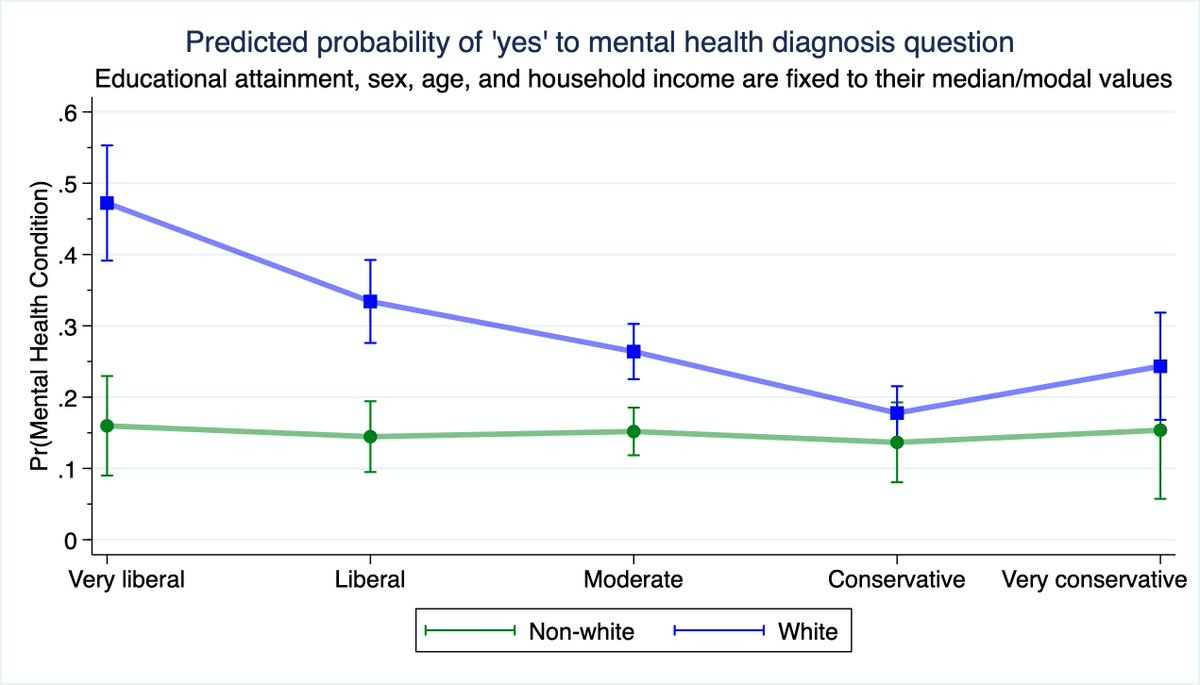Today I interview Emil O. W. Kirkegaard.
I ask about mental illness and politics:
How much can we rely on self-reporting to determine mental illness? Is it possible that liberals overreport their supposed “mental illness” for narcissistic reasons, and conservatives under-report because they are lower in openness?
Is mental illness similar to pain, in that we have to rely on self-reporting? Are there ways of testing mental fitness in the same way we would test physical fitness?
How do we define mental illness? If women report greater levels of mental illness, but also have less extreme / destructive behaviors (suicide, dropout rate, crime rate, addiction rate), then are they really more mentally ill?
How do suicide attempts differ between men and women?
How do dog-people differ from cat-people?
Is obesity a mental illness?
We also cover group evolutionary strategies:
Are whites less ethnocentric than other groups?
Are conservatives more ethnocentric than liberals?
What is the relationship between tribalism, ethnocentrism, dogmatism, ideology, and religiousness? Is there some kind of general T-factor of tribalism?
Why is leftism so successful as a political strategy?
Is leftism an evolutionary strategy?
Why are north-west Europeans uniquely leftist when compared to other groups?
What is the relationship between leftism, individualism, tribalism, dogmatism, ethnocentrism, egalitarianism, meritocracy, and corruption?
This was a wide ranging discussion you won’t want to miss!
Check him out here:
More detailed notes:
1. How much can we rely on self-reporting? Is it possible that liberals overreport for narcissistic reasons, and conservatives under-report because they are lower in openness?
Yes, it’s possible there may be self-reporting biases. This manifests as a failure of measurement invariance. Statistically speaking, it means the properties of the test are not the same between groups (leftists vs. rightists), or along some continuum (left-right). Until recently, little research had been done on this question. Mental health is not the only area where survey responses may not function equivalently. However, two recent studies have investigated this question and found no grounds for concern. More research is still needed in my opinion.
2. How do we define mental illness? If women report greater levels of mental illness, but also have less extreme / destructive behaviors (suicide, dropout rate, crime rate, addiction rate), then are they really more mentally ill?
Defining mental illness or disorder is difficult. There are many approaches, e.g. evolutionary, functional, subjective (distress). Fundamentally, the analogy is from bodily (somatic) illnesses. Obvious cases involve an infection with a known pathogen (e.g. influenza virus), or aggressive cancers. However, even in somatic areas, it can be difficult. Are dwarfism and giantism disorders? We know that these result from genetic changes (errors we call them) in growth related genes. They result in shorter lifespans. But can we really define disorders in terms of lifespan? Being less intelligent is also associated with shorter lifespan, but we don’t generally call the less intelligent for mentally disordered unless they are very low (retarded). Some genetic variants may make one more risk-taking, which results in shorter lifespan, but also perhaps higher fertility. Evolutionarily, this would perhaps be beneficial, at least in some environments (like ADHD is now).
In the subjective, distress model, whatever causes people distress we call disordered. Does that mean high neuroticism is a disorder of sorts? What about introversion? Many other people with current or past diagnoses (e.g. autism, homosexuality) don’t seem particularly unhappy, so wouldn’t qualify by the distress definition. In practice, we work mostly with a definition based on concept validity. Mental disorders are clusters of symptoms (behavioral or internal) that relate positively to other disorders. It is somewhat circular, but few people would deny that schizophrenics who loudly talk to invisible people and act according are mentally disordered. Neither would people generally deny that the severely retarded (e.g. because of Down syndrome) have a mental disorder (as well as physical disorder). An attempt at a definition, in my opinion, must include some reference to these findings about cross-cluster correlations (almost positive manifold) as well as functionality and evolutionary relevance. As such, a mental disorder is a cluster of symptoms that 1) correlate positively with other recognized clusters and their symptoms, 2) inhibit typical human functioning, 3) are associated with lower fertility in the evolutionarily relevant society (not the current).
3. Is mental illness similar to pain, in that we have to rely on self-reporting? Are there ways of testing mental fitness in the same way we would test physical fitness?
Pain could be measured objectively using neuroscientific approaches (fMRI I imagine). Generally, research finds that using other-ratings are more reliable and more valid than self-reporting. Humans know a lot about themselves, but they are also biased observers. Third parties do not have the same bias, but know less. Note that many physical disorders don’t have strict definitions either. I imagine that in the future, detailed neuroscientific data would be able to provide more direct measures by examining brain activity.
4. Is there any research to suggest liberals have a higher suicide rate than conservatives?
Good question. Suicide is an interesting act that we mostly associate with mental disorder. However, historically and cross-culturally, this was not the case. Many cultures practiced senicide (killing of the old, often by suicide) to relieve the group of their burden. Cross-cultural data on suicides show marked differences between countries. When people move, they take their suicide propensity with them to some extent. There doesn’t seem to be a lot of research on political ideology and suicide. It is difficult to study because suicide is rare. I found some work on US state differences, but these can be difficult to interpret in terms of causation. Overall, we know some associations of suicide within a given population: mental illness, gun ownership, less religiousness, loneliness, poor health, low intelligence. Trying to guess whether leftists are higher or lower means trying to estimating the joint effects of these. My guess is that they are a bit higher.
5. If we separate out "extreme liberals" from normal liberals or leaning liberals, does the effect disappear?
No. The pattern is quite but not entirely linear. See my recent study of Finnish data.
6. What about whites vs non-whites? How does political ideology affect races differently? Could this be because leftism is anti-white and thus causes more anxiety and depression, whereas leftism is affirmative and ethno-centric from the standpoint of non-whites?
Zach Goldberg has posted results for this question. It appears the association between political ideology and mental health is stronger among American Europeans (Whites). Perhaps this is because the White leftists are more extreme in their beliefs than non-White leftists, and also because leftism includes anti-White beliefs.
The topic is not well-studied, but deserves more research.
6.a. Are non-whites who identify as "extreme liberals" more or less likely to have interracial relationships? (i.e. are they more ethnocentric?)
Good question. I was able to find one study testing the idea based on a speed-dating study. If we ignore the extreme p-hacking in the study, it found that: Black conservatives have higher preference for White partners, Black leftists more for Black partners. As such, for Whites, conservatism predicts ethnocentric dating, and for Blacks, leftism predicts ethnocentric dating.
I couldn’t find any more studies of this, so it seems we don’t know.
7. can we model white liberals as an ethno-centric group if they tend to form relationships with other white liberals and exclude conservatives from their social groups?
No, that would be a politico-centric group.
8. Who has a higher rate of intermarriage: conservatives or liberals? What about when we break things down by type of intermarriage (black vs asian vs hispanic)?
I'm not sure you have answers to these on hand as I'm not aware of all the research out there, but your educated guesses would still be informative toward understanding the limitations of the current research
Leftists are surely higher because they live in more racially diverse areas, which affect partner availability. On top of that, there’s some effect of preferences, since people mate assortatively for political opinion, and most non-Whites in USA are leftist.
















